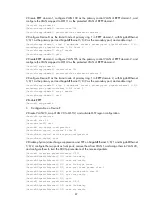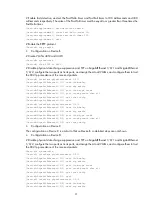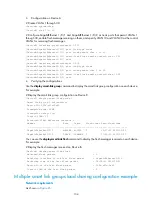
100
To do…
Use the command…
Remarks
Enter system view
system-view
—
Enter Ethernet port view or Layer 2
aggregate port view
interface
interface-type
interface-number
—
Configure the control VLANs for
receiving flush messages
smart-link flush enable
[
control-vlan
vlan-id-list
]
Required
By default, no control VLAN exists
for receiving flush messages.
CAUTION:
•
Configure all the control VLANs to receive flush messages.
•
If no control VLAN is specified for processing flush messages, the device forwards the received flush
messages without processing them.
•
Make sure that the receive control VLAN is the same as the transmit control VLAN configured on the
smart link device. If they are not the same, the associated device will forward the received flush messages
directly without any processing.
•
Do not remove the control VLANs. Otherwise, flush messages cannot be sent properly.
•
Make sure that the control VLANs are existing VLANs, and assign the ports capable of receiving flush
messages to the control VLANs.
Displaying and maintaining Smart Link
To do...
Use the command…
Remarks
Display smart link group information
display smart-link group
{
group-id
|
all
} [
|
{
begin
|
exclude
|
include
}
regular-expression
]
Available in any view
Display information about the received
flush messages
display smart-link flush
[
|
{
begin
|
exclude
|
include
}
regular-expression
] Available in any view
Clear the statistics about flush
messages
reset smart-link statistics
Available in user view
Smart Link configuration examples
Single smart link group configuration example
Network requirements
As shown in
:
•
Device C and Device D are smart link devices, and Device A, Device B, and Device E are
associated devices. Traffic of VLANs 1 through 30 on Device C and Device D are dually uplinked
to Device A.
•
Configure Smart Link on Device C and Device D for dual uplink backup.
















































